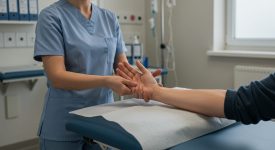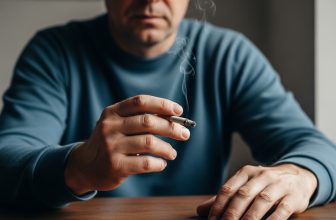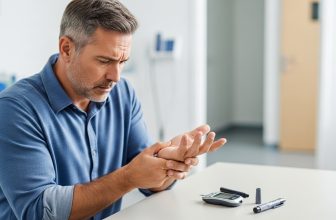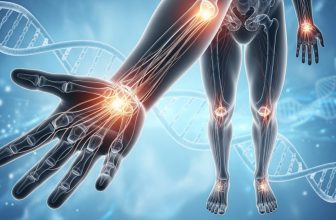
5 Proven Physical Therapy Exercises That Boost Recovery from Dupuytren’s”
Introduction
While no exercise can erase fibrosis, physical therapy for Dupuytren’s plays a crucial role in maintaining hand mobility, improving strength, and preventing stiffness after treatment. Whether you’ve had surgery, collagenase injections, or needle aponeurotomy, a structured rehabilitation plan can extend your results and reduce the risk of recurrence.
1. Why Movement Matters
Dupuytren’s disease causes overactive fibroblasts to deposit dense collagen that restricts joint motion. Without stretching and controlled movement, tissues can tighten again, limiting finger extension.
A trained hand therapist guides patients through gentle, progressive exercises to keep joints supple, promote circulation, and prevent new adhesions.
(External link: NIH Dupuytren’s Overview)
2. Post-Treatment Goals
Physical therapy typically begins within a few days after treatment. Early intervention is key to regaining full function.
The main goals include:
-
Reducing swelling and discomfort.
-
Restoring finger extension and grip strength.
-
Maintaining scar elasticity and tissue glide.
3. Common (Physical Therapy) Exercises for Recovery
Therapists tailor exercises to the stage of healing and contracture severity. Some of the most recommended include:
-
Passive Stretching: Gently straighten fingers using the opposite hand to improve flexibility.
-
Tendon Glides: Slowly move from an open palm to a loose fist to enhance tendon mobility.
-
Table Presses: Place your hand flat on a table and press lightly for 10–15 seconds to maintain extension.
-
Grip Training: Use a soft therapy ball to build controlled grip strength.
These exercises help retrain the hand’s natural motion patterns and prevent post-treatment stiffness
4. The Role of Splinting and Massage
Night splints help maintain finger extension while tissues heal, preventing the hand from reverting to a bent position.
Meanwhile, gentle scar massage using a neutral oil or gel enhances blood flow, softens scar tissue, and supports collagen realignment.
Therapists caution against overly aggressive stretching, which can cause micro-injuries and delay healing.
5. Long-Term Physical Therapy and Holistic Support
Most patients continue supervised therapy for 4–8 weeks, followed by daily home exercises. Long-term maintenance — occasional stretching and grip work — helps prevent contracture return.
Research in the Journal of Hand Therapy found that patients who followed a structured rehab plan achieved:
-
Greater range of motion
-
Less stiffness
-
Faster healing
-
Stronger grip function
Beyond exercise, maintaining an anti-inflammatory diet, adequate hydration, and stress control can further reduce systemic inflammation that fuels fibrosis.
Key Takeaways
-
Essential step: Physical therapy completes the healing process.
-
Start early: Begin movement exercises within days post-treatment.
-
Be consistent: Daily stretching maintains flexibility.
-
Splints matter: Night splints help preserve extension.
-
Think holistically: Combine therapy with nutrition and lifestyle care for long-term success.
Connect with our Dupuytren’s community for support and real-world tips: facebook.com/groups/dupuytrenssolutionsandhealth. Discover my journey in Dupuytren’s Solutions and learn about all treatments — conventional, alternative, root-cause therapies, and remission strategies — at dupuytrenssolutions.com.
Attribution: (CC BY 4.0) Adapted from Larson D et al. Rehabilitation Following Dupuytren’s Disease Treatment: Clinical Outcomes and Evidence-Based Guidelines. J Hand Ther 2017; 30(2): 180–189. Licensed under Creative Commons Attribution 4.0. For the complete article and reference list, click Source.
Legal & Medical Disclaimer: This content is for informational and educational purposes only and is not a substitute for professional medical advice, diagnosis, or treatment. Always consult your healthcare provider about any medical concerns or treatment options. Dupuytren’s Solutions is an educational resource meant to be used alongside, not instead of, professional medical care, and individual results may vary.






